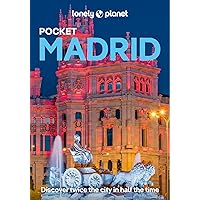How Spain’s Festivals Reflect Its Cultural Diversity
Spain’s festivals are a vibrant expression of its cultural diversity, a tapestry woven from centuries of history, regional influences, and unique local traditions. From the tomato-throwing frenzy of La Tomatina to the solemn processions of Semana Santa, each event offers a glimpse into the heart and soul of the nation. These festivals are not just about celebration; they are a way for communities to express their identity and share their rich cultural heritage with the world. Whether you’re drawn to the fiery passion of flamenco in Andalusia or the colorful costumes of the Moors and Christians in Valencia, Spain’s festivals promise an unforgettable experience. In this article, we’ll explore some of the most iconic festivals across the country, revealing how they reflect the diverse cultural landscape of Spain. From the ancient traditions of the Basque Country to the modern artistic expressions of Catalonia, you’ll discover why Spain is a land of contrasts, where every region has its own unique story to tell. Join us as we journey through Spain’s most celebrated festivals, where history, culture, and community come together in a spectacular showcase of the country’s vibrant spirit.
La Tomatina: A Splash of Fun in Buñol
Every August, the small town of Buñol in eastern Spain becomes the epicenter of one of the world’s most famous food fights: La Tomatina. Thousands of participants gather to pelt each other with ripe tomatoes in a messy, joyful celebration that lasts just one hour. While the origins of La Tomatina are somewhat murky—some say it began as a local prank in the 1940s—the festival has grown into a symbol of communal fun and chaos. Before the tomato fight begins, the streets of Buñol are filled with revelers from all over the world, many wearing white T-shirts that soon turn red from the onslaught of flying produce. The festival officially starts when someone manages to climb a greased pole to retrieve a ham at the top, signaling the release of truckloads of tomatoes. After the hour-long battle, the town’s streets are hosed down, and the participants clean themselves off in nearby showers, leaving Buñol to return to its quiet self until the next year. La Tomatina is a unique reflection of Spain’s playful side, a testament to the country’s ability to embrace joy and camaraderie in the most unexpected ways.
Semana Santa: A Solemn Tradition
In stark contrast to the exuberance of La Tomatina, Semana Santa (Holy Week) is a deeply religious event that takes place across Spain in the week leading up to Easter. This festival, particularly prominent in Andalusia, is marked by solemn processions, where brotherhoods (cofradías) carry massive, elaborately decorated floats (pasos) depicting scenes from the Passion of Christ. The processions are accompanied by mournful music, and the streets are filled with the scent of incense and the sound of penitents’ footsteps. In cities like Seville and Málaga, Semana Santa is a grand spectacle, drawing thousands of visitors who come to witness the devotion of the participants and the beauty of the floats. In Seville, the processions are so revered that they are broadcast live on television, with some of the most famous pasos taking place in the early hours of the morning. Semana Santa reflects Spain’s deep-rooted Catholic heritage, but it also showcases the artistic and cultural traditions of the regions, with each procession offering a unique display of craftsmanship and emotion.
Las Fallas: Fire and Art in Valencia
Valencia’s Las Fallas is a fiery celebration of art and creativity that takes place every March. The festival is known for its incredible sculptures, or fallas, which are constructed from wood, papier-mâché, and other materials. These towering works of art, often satirical in nature, are displayed throughout the city before being set ablaze in a dramatic finale known as the Cremà. The origins of Las Fallas date back to the Middle Ages when carpenters would burn leftover wood at the end of winter to celebrate the arrival of spring. Over time, this simple ritual evolved into a major cultural event, with neighborhoods across Valencia competing to create the most impressive falla. The festival also features parades, fireworks, and traditional music, with participants dressed in colorful costumes that reflect Valencia’s rich history. Las Fallas is a celebration of renewal and transformation, embodying the spirit of a city that embraces both its past and its future. It’s a testament to Spain’s ability to blend tradition with innovation, making it one of the country’s most captivating festivals.
Carnival: A Burst of Color and Joy
Carnival is celebrated across Spain, but the most famous festivities take place in Santa Cruz de Tenerife and Cádiz. In Santa Cruz, the streets come alive with vibrant parades, elaborate costumes, and music, as the island’s residents and visitors alike join in the revelry. The highlight of the festival is the election of the Carnival Queen, a dazzling event that showcases the creativity and talent of the participants. In Cádiz, Carnival is known for its humorous and satirical performances, with groups of singers, known as chirigotas, entertaining crowds with witty songs that poke fun at local and international events. The city’s narrow streets and squares are filled with people in costume, creating a lively and festive atmosphere. Carnival in Spain is a time for letting loose, for embracing joy and laughter, and for celebrating life’s many pleasures. It’s a reflection of Spain’s ability to find humor and happiness in even the most challenging times, a testament to the resilience and spirit of its people.
Flamenco: The Heartbeat of Andalusia
No discussion of Spain’s cultural diversity would be complete without mentioning flamenco, the passionate music and dance form that originated in Andalusia. Flamenco is more than just a performance; it’s a way of life, a deeply emotional expression of the human experience. The music, characterized by its haunting guitar melodies and soulful singing, is the heartbeat of Andalusia, reflecting the region’s complex history and cultural influences. Flamenco festivals, known as ferias, are held throughout Andalusia, with the most famous being the Feria de Abril in Seville. During these festivals, the streets are filled with dancers, singers, and musicians, all dressed in traditional attire, creating a colorful and energetic celebration of Andalusian culture. For visitors, flamenco offers a window into the soul of Spain, a chance to experience the raw emotion and intensity that define this unique art form. Whether watching a professional performance in a tablao or joining in a spontaneous dance in the streets, flamenco is a powerful reminder of Spain’s rich cultural heritage and its enduring passion for life.
A Tapestry of Traditions
Spain’s festivals are a reflection of its cultural diversity, a testament to the country’s ability to embrace both tradition and modernity. From the joyous chaos of La Tomatina to the solemn beauty of Semana Santa, each festival offers a unique glimpse into the heart of Spain. Whether you’re drawn to the artistic expression of Las Fallas or the passionate rhythms of flamenco, these celebrations are an invitation to experience the country’s rich cultural tapestry firsthand. As you explore Spain’s festivals, you’ll discover a land of contrasts, where history and tradition coexist with innovation and creativity. It’s this diversity that makes Spain such a fascinating destination, a place where every festival tells a story and every celebration is a chance to connect with the spirit of the nation.





